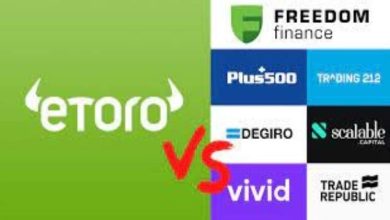Ethereum: Revolutionizing the Digital Economy through Smart Contracts

Understanding Ethereum and Its Innovation
Defining Ethereum
Ethereum has emerged as a groundbreaking blockchain platform that extends beyond the capabilities of Bitcoin. Unlike Bitcoin, which primarily serves as a digital currency, Ethereum introduces a versatile platform for building and deploying decentralized applications (DApps) using smart contracts. This innovation has paved the way for transformative changes in the digital economy.
Beyond Bitcoin: The Ethereum Difference
Contrasting Ethereum’s Objectives with Bitcoin
While both Ethereum and Bitcoin operate on blockchain technology, their primary objectives diverge significantly. Bitcoin aims to revolutionize the financial industry by providing an alternative to traditional currencies and payment systems. In contrast, Ethereum seeks to revolutionize not just financial transactions, but also the entire digital landscape by enabling the creation of decentralized applications and smart contracts.
Ethereum Virtual Machine (EVM)
How EVM Executes Code Across the Network
At the core of Ethereum’s functionality lies the Ethereum Virtual Machine (EVM), a decentralized and globally accessible supercomputer. The EVM allows developers to create and deploy smart contracts and DApps across the network. These smart contracts are self-executing agreements with predefined rules, enabling automation and transparency in a wide range of applications.
Real-World Applications of Smart Contracts
Smart Contracts Enabling Financial Services
Smart contracts have gained immense traction in the financial sector. They enable the creation of decentralized financial instruments, such as tokenized assets and stablecoins, facilitating frictionless cross-border transactions and remittances. These contracts also eliminate intermediaries, reducing costs and enhancing the efficiency of financial operations.
Lending and Yield Farming
In addition to traditional financial services, Ethereum’s smart contracts have given rise to decentralized lending platforms and yield farming protocols. These platforms allow users to lend, borrow, and earn interest on their cryptocurrency holdings without the need for banks or financial intermediaries. Yield farming, on the other hand, offers users the opportunity to earn rewards by providing liquidity to decentralized exchanges and protocols.
The Ethereum Marketplace
Current Price and Market Capitalization
The Ethereum network’s native cryptocurrency, Ether (ETH), serves as both a digital currency and a utility token for accessing the Ethereum ecosystem. Its value has seen substantial growth since its inception. As of now, the ethereum price usdt and its market capitalization reflect its significance in the blockchain industry.
Ethereum 2.0 and Beyond
Shifting to Proof-of-Stake and Enhancing Scalability
Ethereum 2.0, also known as Eth2 or Serenity, represents a major upgrade to the Ethereum network. One of its key components is the transition from the energy-intensive Proof-of-Work (PoW) consensus mechanism to the more sustainable Proof-of-Stake (PoS) mechanism. This transition aims to enhance network scalability, security, and energy efficiency, addressing some of the limitations of the current Ethereum architecture.
Conclusion
Ethereum’s revolutionary impact on the digital economy is undeniable. Through the introduction of smart contracts and decentralized applications, Ethereum has created a platform that empowers developers and users to reshape industries and reimagine traditional processes. As Ethereum continues to evolve with upgrades like Ethereum 2.0, its potential to drive innovation and disruption across various sectors remains promising.




